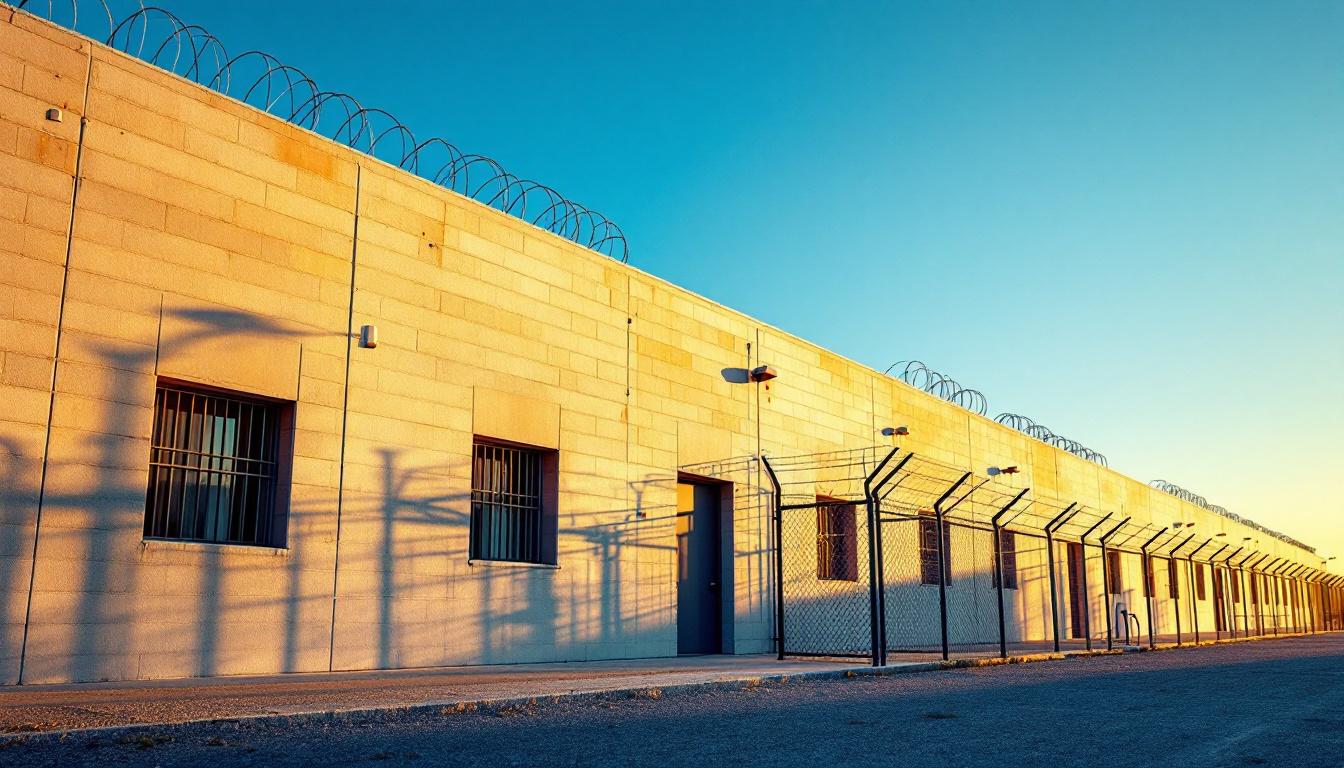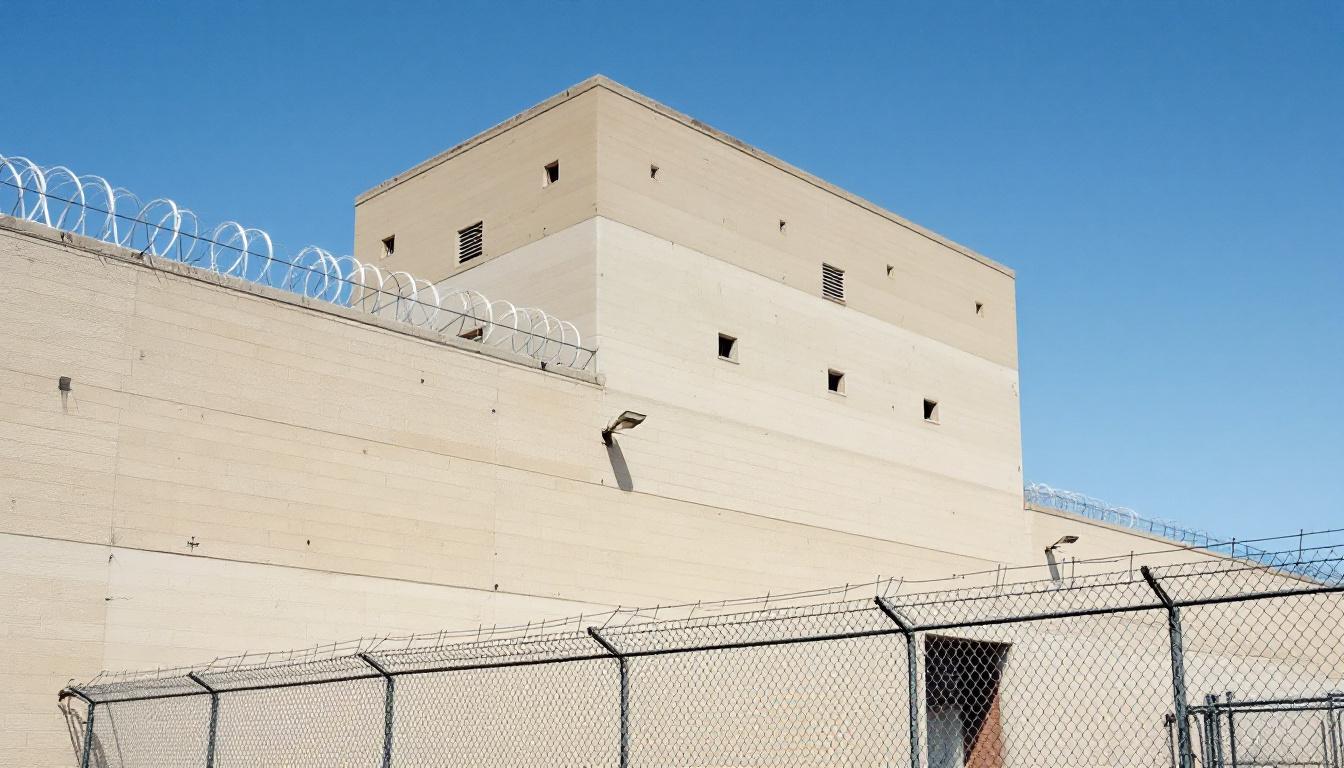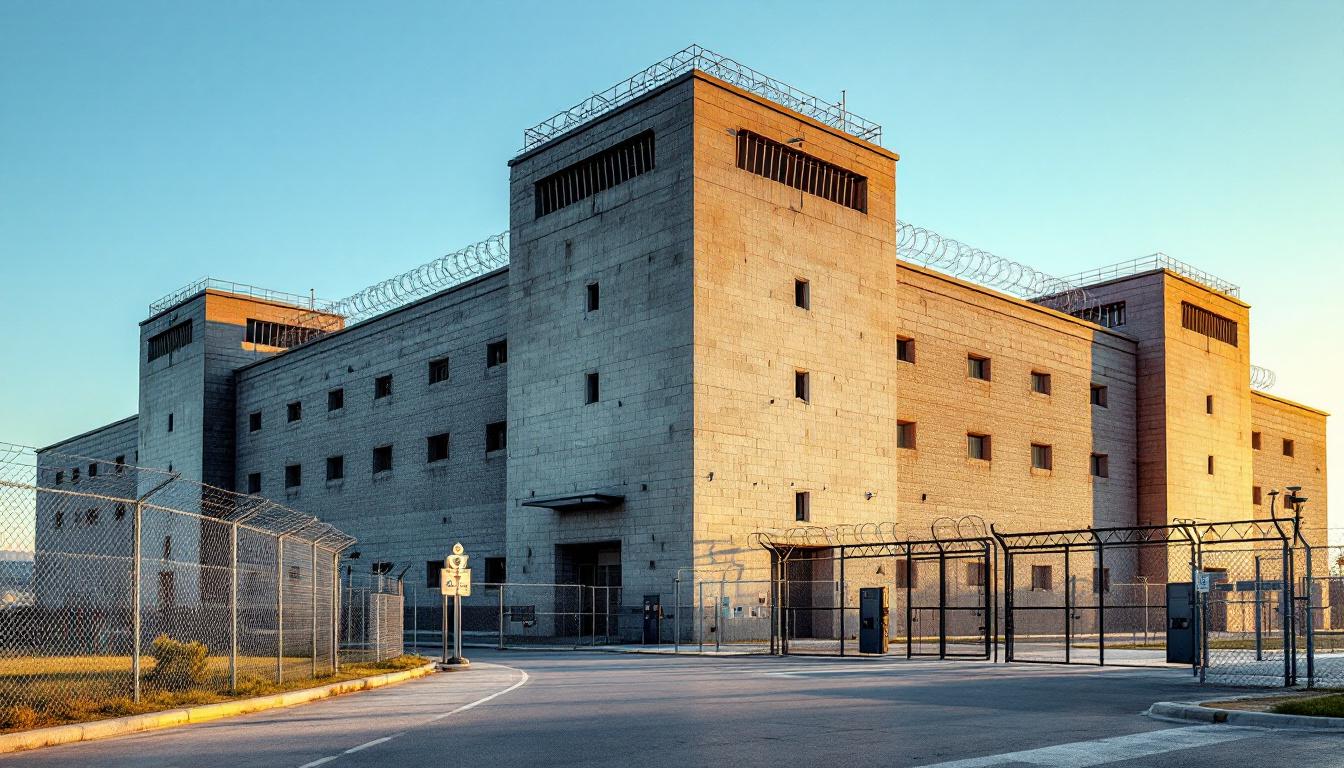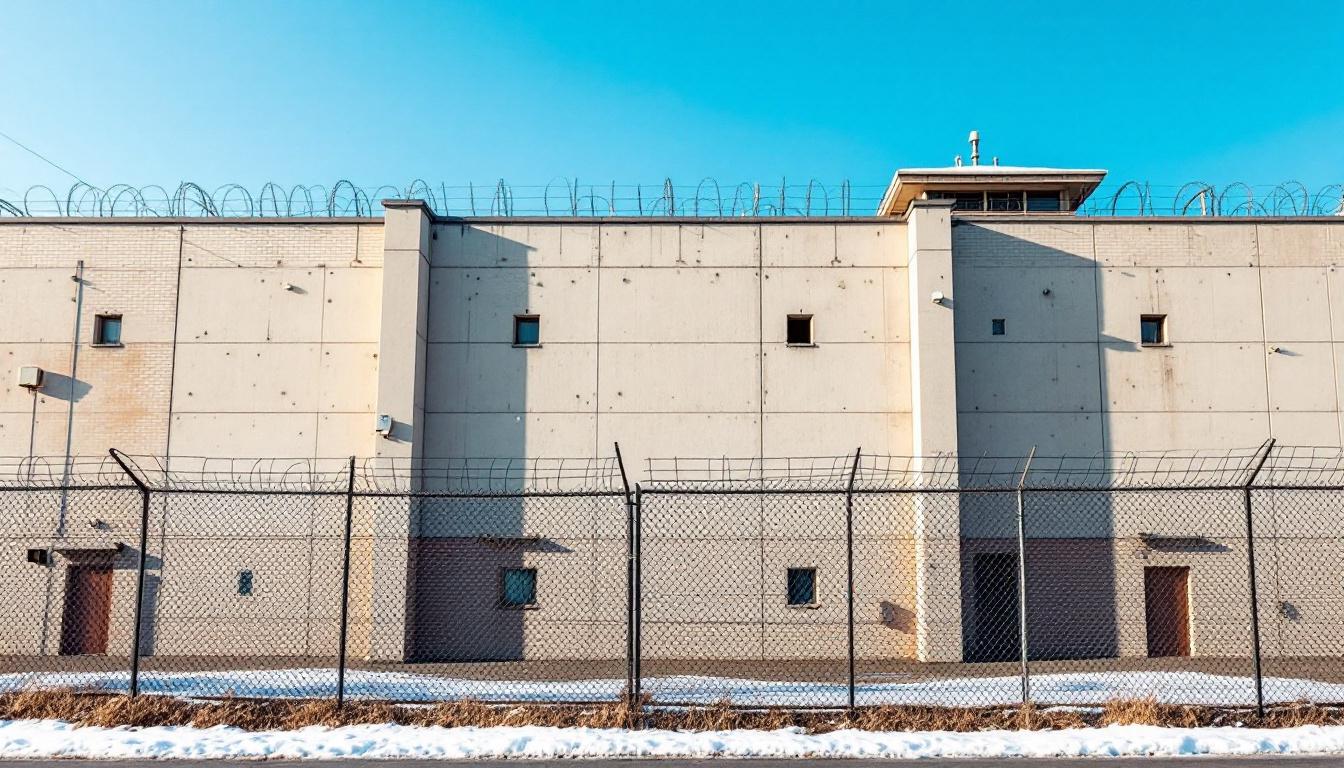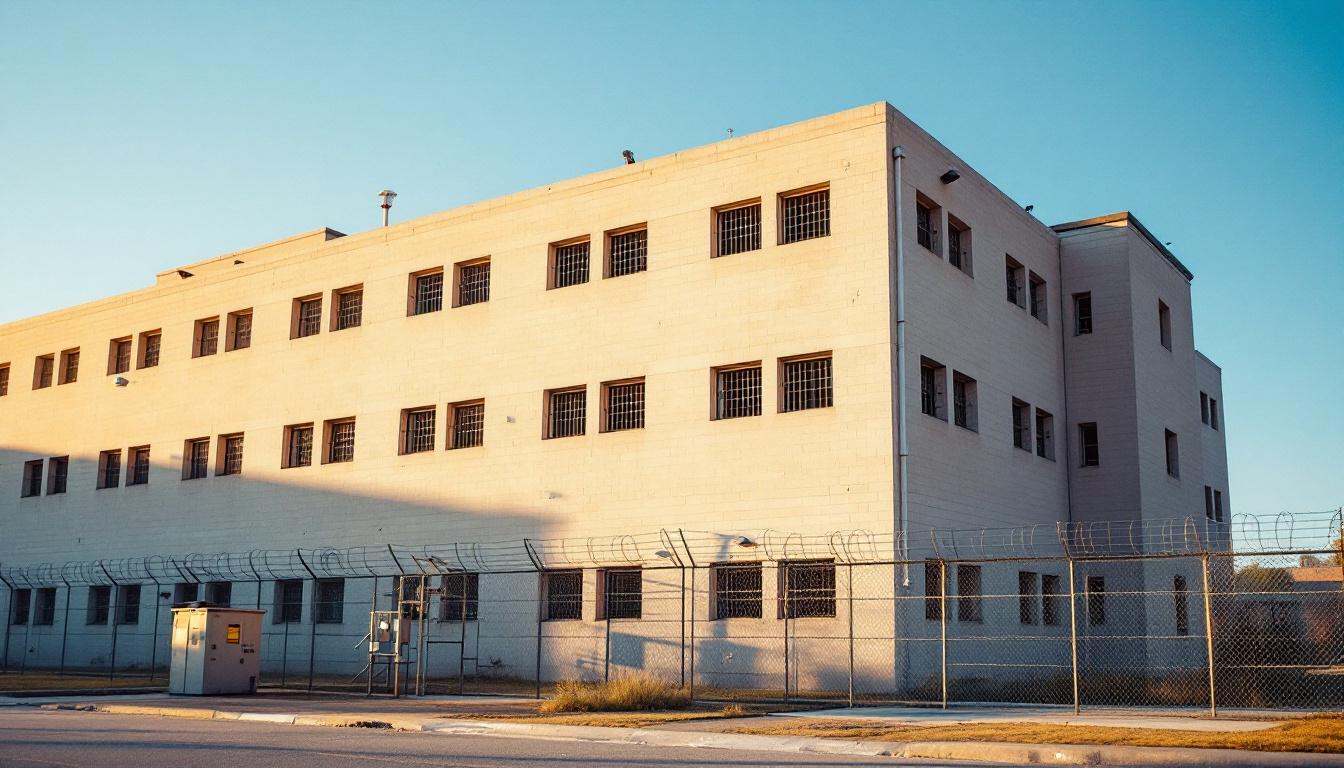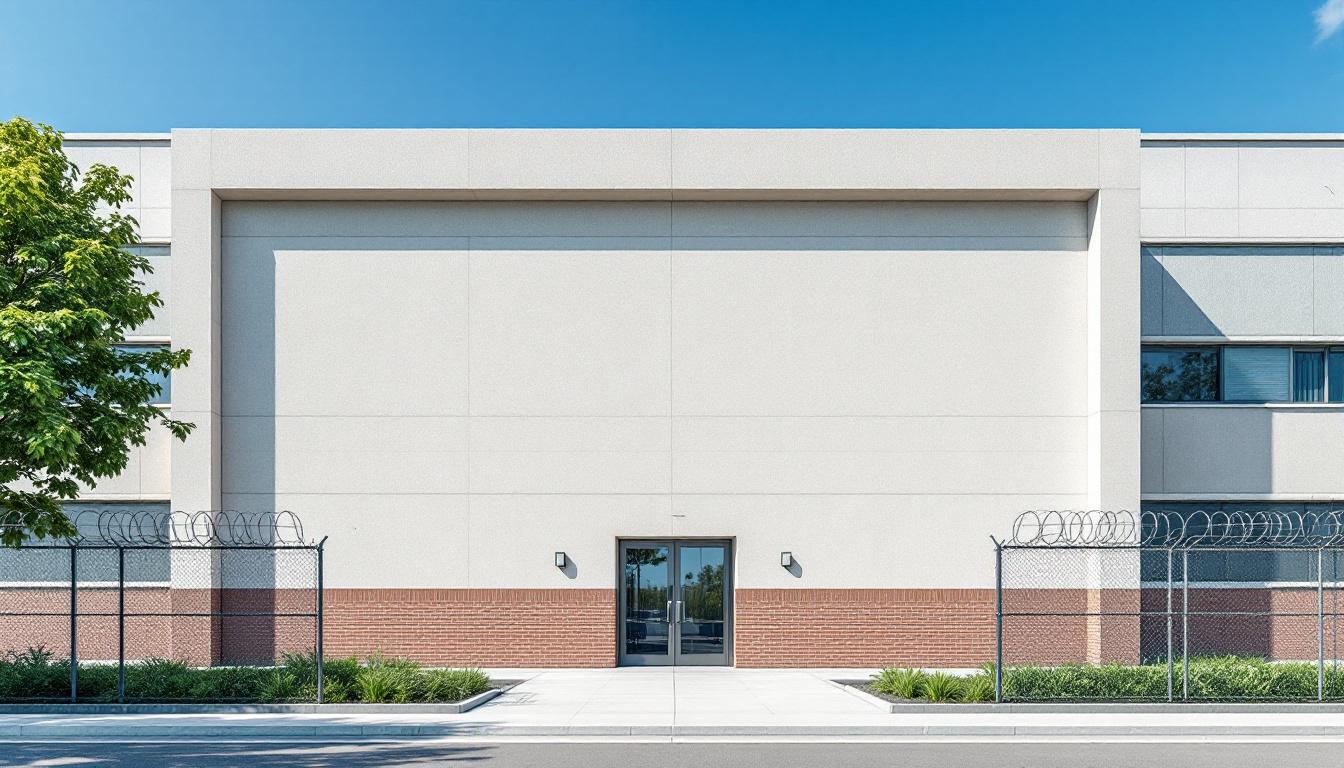
Quick Navigation
How to contact an inmate at Toombs Sheriff-Detention Center
This comprehensive guide will walk you through how to connect with an inmate at Toombs Sheriff-Detention Center. Follow the steps below to find an inmate and send letters and photos:
- Search for the inmate using our search tool below
- Create your account or log in to Penmate
- Write your message (up to 6,000 characters)
- Send instantly - inmates receive printed copies daily
Find an Inmate
Search for an inmate to start communicating today
Tip: You can search by first name, last name, or inmate ID number
To contact a person at Toombs Sheriff-Detention Center start by searching for the person on the official facility website. Perform a search by following these steps:
- Step 1: Enter their first name and last name into the search form and click "Search"
- Step 2: Locate their inmate record
- Step 3: Write down their Inmate ID and any housing information provided
Important! Be sure to enter the person's full name. Nicknames should not be used.
How to Send Messages to Inmates

You can use your phone or computer to send emails, letters, and photos to an inmate. Messages are sent electronically to inmate tablets or kiosks at the facility. If you would like to send a message, start by searching for an inmate at Toombs Sheriff-Detention Center.
Sending Photos and Postcards

A great way to send love and support to a loved one at Toombs Sheriff-Detention Center is to send photos and postcards. It only takes a few minutes to send photos from your phone and it makes a huge difference. You can also mail postcards with words of support and inspiration, or design your own postcard for special moments like birthdays and holidays.
Important! Be sure not to send any explicit photos or they may not be approved by the facility. You can also use a photo printing app like Penmate to make sure your photos are printed at the correct size (4x6 or 3x5) and are mailed according to the rules and regulations of Toombs Sheriff-Detention Center.
Frequently asked questions about Toombs Sheriff-Detention Center
-
How long does it take to deliver a message?
If you're sending an email message your letter is usually delivered within 24-48 hours. For messages sent via mail you should expect delivery within 3-7 days. All messages will need be approved by Toombs Sheriff-Detention Center.
-
How much does it cost to send a message to Toombs Sheriff-Detention Center?
You can send a message free using your phone or mail a message via USPS for the price of a $0.60 stamp and envelope. You can also purchase credits or e-stamps from services starting at $1.99.
-
What services can I use to contact an inmate at Toombs Sheriff-Detention Center?
Penmate
You can use Penmate to send letters and photos to an inmate from your phone. It's an easy way to stay in touch during your loved one's incarceration. Use the inmate locator to find an inmate's location and contact information, then you can send messages within a few minutes.
Securus messaging
Securus may be another option for communicating with an inmate at Toombs Sheriff-Detention Center. You can create a friends and family account and purchase credits to send messages. All messages will be reviewed and must be approved by the facility.
JPay
Some county jails and state prisons may support sending messages with JPay. You must register an account with the system, find your loved one, and purchase stamps to send messages. For some locations you can also attach photos.
Smart Jail Mail
You may also check if Smart Jail Mail is available at Toombs Sheriff-Detention Center. Smart Jail Mail is operated by Smart Communications and has contracted with some state and county jails. After purchasing credits, your messages and photos are sent to the facility, printed out, and then handed out to your loved one.
-
What is the mailing address of Toombs Sheriff-Detention Center?
Mailing address:
Toombs Sheriff-Detention Center
357 NW Broad St
Lyons, GA 30436
Phone: (912) 526-1002 -
What are the visiting hours at Toombs Sheriff-Detention Center?
Visiting hours at Toombs Sheriff-Detention Center vary by housing unit and security level. Generally, visits are scheduled on weekends and holidays, with some facilities offering weekday visits. Contact the facility directly at (912) 526-1002 or check their website for the current visiting schedule. Visits typically last 30-60 minutes and must be scheduled in advance.
-
What items are prohibited when sending mail to Toombs Sheriff-Detention Center?
Prohibited items typically include: cash, personal checks, stamps, stickers, glitter, glue, tape, staples, paperclips, polaroid photos, musical or blank greeting cards, hardcover books, magazines with staples, and any items containing metal or electronics. Only send letters on plain white paper with blue or black ink. Photos must be printed on regular photo paper (no Polaroids). Always check with Toombs Sheriff-Detention Center for their specific mail policies.
-
How do I send money to an inmate at Toombs Sheriff-Detention Center?
You can send money to an inmate at Toombs Sheriff-Detention Center through several methods: 1) Online using JPay, Access Corrections, or the facility's approved vendor, 2) Money orders mailed directly to the facility with the inmate's name and ID number, 3) Kiosks located in the facility lobby, or 4) Over the phone using a credit or debit card. Fees vary by method, typically ranging from $2.95 to $11.95 per transaction.
-
Can I schedule a video visit with an inmate at Toombs Sheriff-Detention Center?
Many facilities now offer video visitation as an alternative to in-person visits. At Toombs Sheriff-Detention Center, video visits may be available through services like Penmate, Securus Video Connect, GTL, or ICSolutions. Video visits typically cost $10-20 for 20-30 minutes and must be scheduled in advance. You'll need a computer or smartphone with a camera and reliable internet connection. Contact the facility for their specific video visitation policies and approved vendors.
-
What identification do I need to visit an inmate at Toombs Sheriff-Detention Center?
All visitors must present valid government-issued photo identification such as a driver's license, state ID, passport, or military ID. Minors must be accompanied by a parent or legal guardian who can provide the minor's birth certificate. Some facilities require visitors to be on the inmate's approved visitation list, which may require a background check. Contact Toombs Sheriff-Detention Center for specific ID requirements and visitor approval procedures.
-
How can I find out an inmate's release date?
To find an inmate's release date at Toombs Sheriff-Detention Center, you can: 1) Use the online inmate search tool if available, 2) Call the facility's records department, 3) Contact the inmate's case manager or counselor, or 4) Have the inmate provide this information during a call or visit. For privacy reasons, some facilities only release this information to immediate family members.
Facility Overview
Contact Information
Toombs Sheriff-Detention Center357 NW Broad St
Lyons, GA 30436
Phone: (912) 526-1002
Official Website

About Toombs Sheriff-Detention Center
County jails throughout Georgia's rural communities serve as critical components of the state's broader correctional infrastructure, with facilities like Toombs County Jail in Lyons representing the collaborative approach needed between local law enforcement, judicial systems, and community resources. This GA correctional facility operates within the framework of both immediate public safety needs and longer-term rehabilitation objectives, recognizing that effective corrections work requires coordination across multiple stakeholders. The facility typically houses individuals awaiting trial, serving shorter sentences, or participating in various pre-trial programs, making its role distinctly different from state prison systems while equally important to community safety and justice administration.
Located in Lyons, the county seat of Toombs County in southeastern Georgia, this correctional facility serves the population services needs of a predominantly rural area where agricultural communities and small towns rely heavily on effective local justice systems. The jail generally operates programs that may include educational opportunities, substance abuse counseling, and work release initiatives designed to support successful reintegration into the community. Staff members typically work closely with local social services, probation officers, and family members to develop individualized approaches for inmates, understanding that many individuals cycling through county jail systems benefit from coordinated support that addresses underlying issues contributing to criminal behavior. This collaborative framework often extends to partnerships with local employers, treatment providers, and faith-based organizations that can offer continued support following release.
Programs & Services
Comprehensive support services form the foundation of rehabilitation efforts within Toombs County Jail, where various programs work together to address the diverse needs of the population. The facility's approach emphasizes building essential life skills while providing emotional and spiritual guidance that can help individuals successfully transition back into their communities. These carefully structured programs typically focus on addressing underlying issues that may have contributed to incarceration while preparing participants for meaningful reintegration with their families and broader society.
Educational initiatives often include basic literacy development, GED preparation, and computer literacy training that may supply participants with fundamental technological skills needed in today's workforce. Furthermore, vocational training programs typically provide hands-on experience in various trades and practical skills that can lead to employment opportunities upon release. These educational and vocational services often emphasize building confidence and self-sufficiency, recognizing that stable employment frequently serves as a cornerstone for successful community reentry and family reunification.
The facility may offer individual counseling services that address personal challenges and help participants develop healthy coping strategies for life after incarceration. Furthermore, faith-based services typically provide spiritual support and community connection for those who choose to participate, often serving as an additional source of strength and guidance during the rehabilitation process. These therapeutic and support programs work together to create a comprehensive network of assistance that addresses both practical needs and emotional well-being, ultimately supporting the population's efforts to rebuild their lives and maintain positive relationships with their families and communities.
Daily Life & Visitation
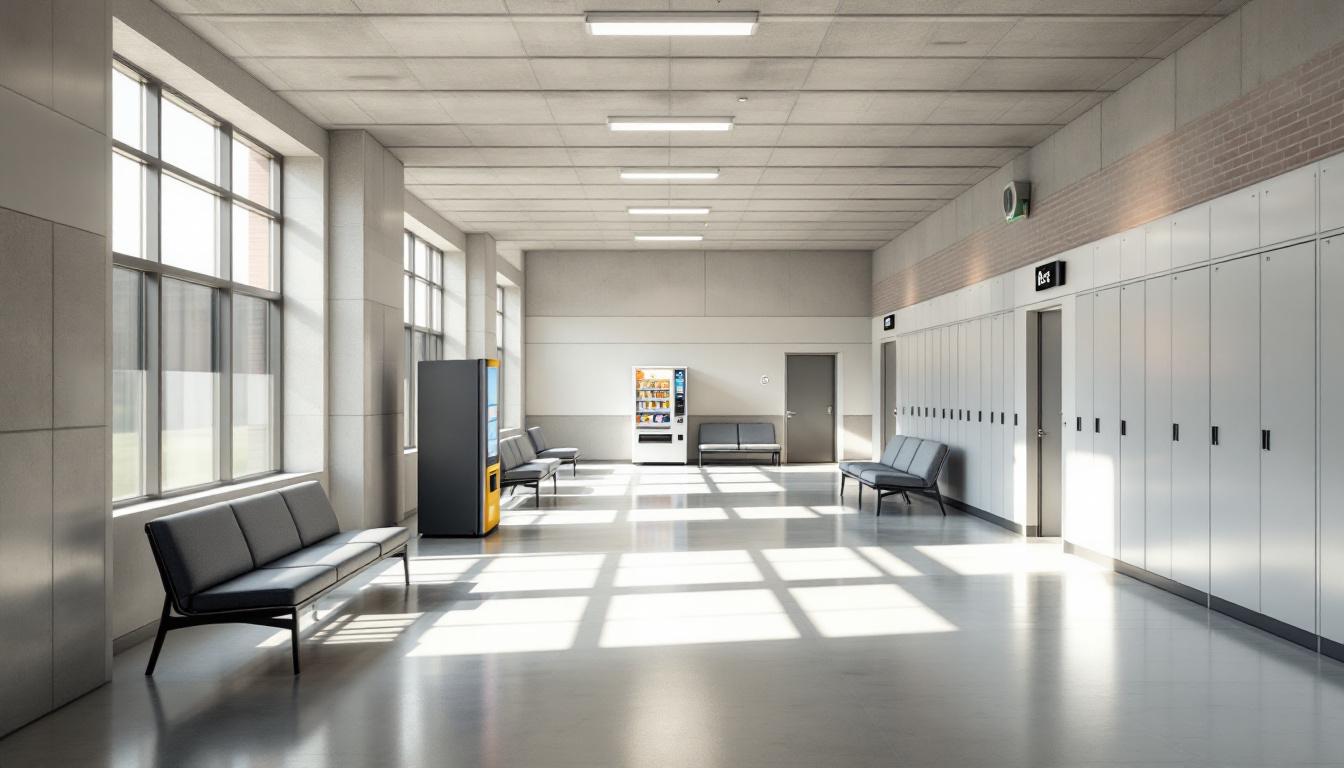
Structured routines and clear organizational frameworks shape every aspect of life within the facility, creating predictable patterns that help the population navigate their daily experiences. Today's schedule typically begins with early morning headcounts and meal service, followed by work assignments, programming, or recreation periods. Consistently maintained routines supply stability throughout the day, with staff coordinating movements between housing units and common areas according to established security protocols.
Living accommodations at the facility generally consist of shared cells or dormitory-style housing units, where the population may be housed based on classification levels and individual circumstances. Personal property is typically limited to essential items and approved commissary purchases. Furthermore, meals are usually served in designated dining areas or delivered to housing units, with the population receiving three meals daily that meet basic nutritional requirements. Although space may be limited, residents often have access to common areas during designated periods for socialization and activities.
Structured programming schedules typically include educational opportunities, substance abuse counseling, and various life skills courses that supply meaningful engagement during incarceration. Recreation periods usually offer outdoor time when weather permits, along with indoor activities and exercise opportunities. The population generally maintains contact with family members through scheduled visitation periods and telephone access, though specific policies may vary based on security classifications. Work assignments within the facility often include kitchen duties, maintenance tasks, and cleaning responsibilities that help maintain daily operations while providing structure for residents.
Ready to Connect?
Start communicating with your loved one today
Search for an Inmate

